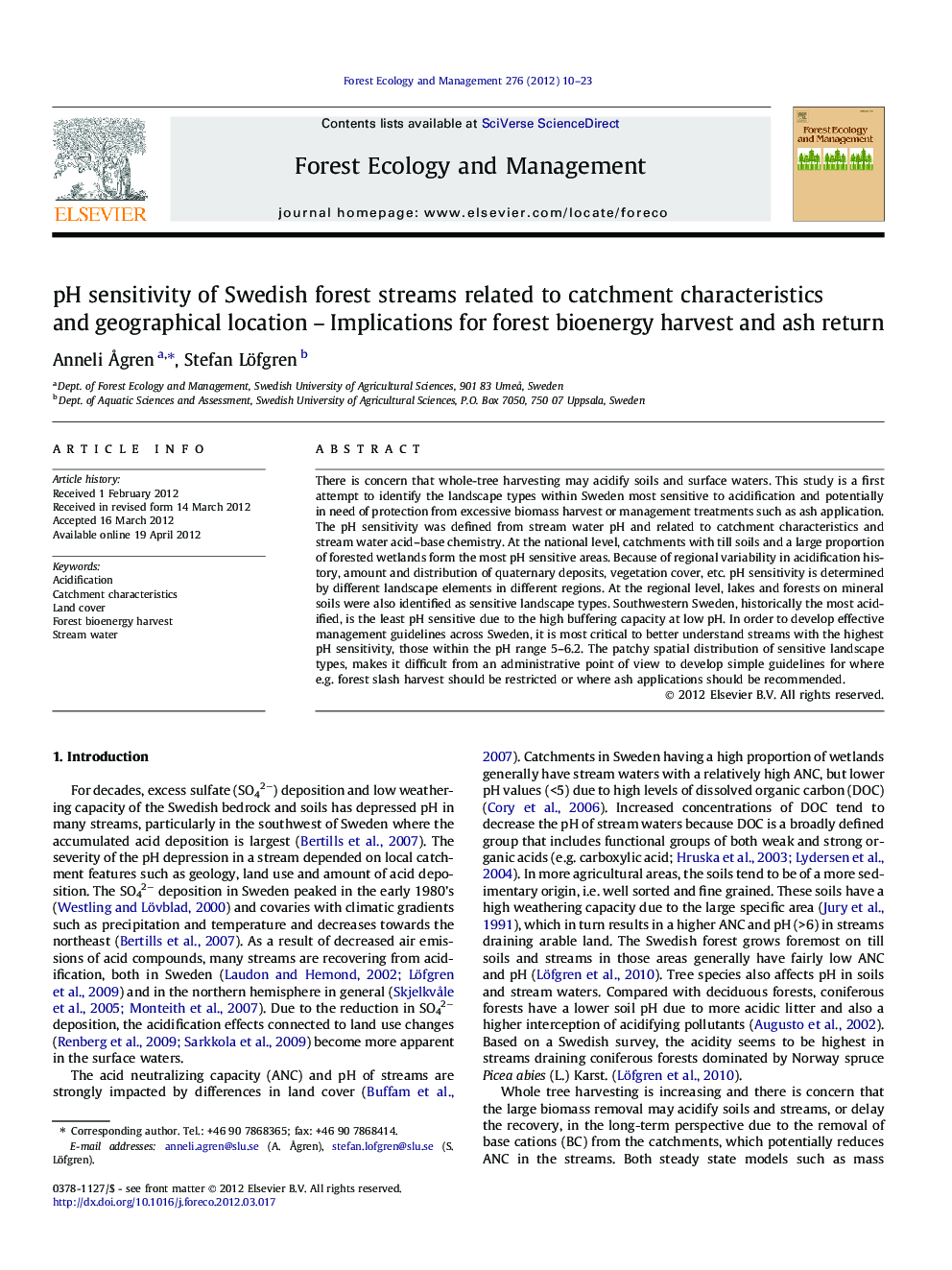| Article ID | Journal | Published Year | Pages | File Type |
|---|---|---|---|---|
| 87321 | Forest Ecology and Management | 2012 | 14 Pages |
There is concern that whole-tree harvesting may acidify soils and surface waters. This study is a first attempt to identify the landscape types within Sweden most sensitive to acidification and potentially in need of protection from excessive biomass harvest or management treatments such as ash application. The pH sensitivity was defined from stream water pH and related to catchment characteristics and stream water acid–base chemistry. At the national level, catchments with till soils and a large proportion of forested wetlands form the most pH sensitive areas. Because of regional variability in acidification history, amount and distribution of quaternary deposits, vegetation cover, etc. pH sensitivity is determined by different landscape elements in different regions. At the regional level, lakes and forests on mineral soils were also identified as sensitive landscape types. Southwestern Sweden, historically the most acidified, is the least pH sensitive due to the high buffering capacity at low pH. In order to develop effective management guidelines across Sweden, it is most critical to better understand streams with the highest pH sensitivity, those within the pH range 5–6.2. The patchy spatial distribution of sensitive landscape types, makes it difficult from an administrative point of view to develop simple guidelines for where e.g. forest slash harvest should be restricted or where ash applications should be recommended.
► pH sensitive streams show large pH changes at small changes in ANC. ► In Sweden, pH sensitive streams generally drain till soils and forested wetlands. ► Different biogeochemical processes determine pH sensitivity in different regions. ► Landscapes determining the most pH sensitive streams are still to be identified. ► Landscape patchiness complicates bioenergy harvest and ash return guidelines.
